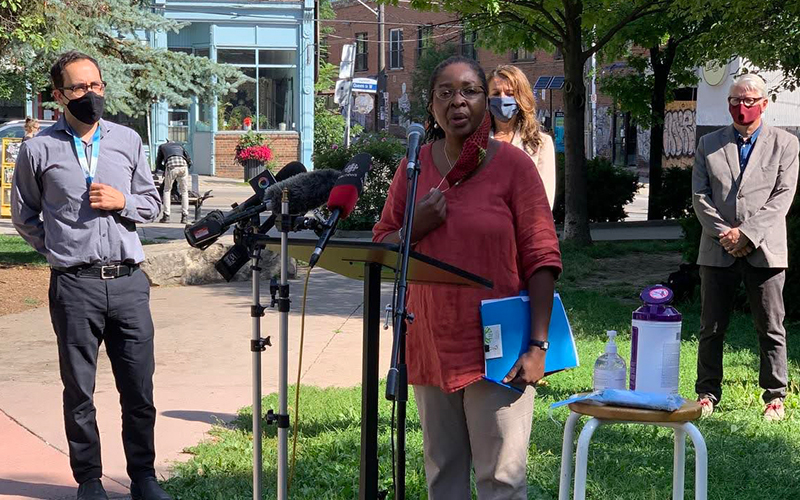Overdoses and overdose-related deaths have been steadily increasing over the last decade. This was especially true during the last two years, during the COVID-19 pandemic. As a result, community organizers and substance users set up grassroots community-driven Consumption Sites in parks and began saving lives. Harm Reduction staff and community members banded together to teach each other how to better support people who use opioids during periods when the street opioid supply is extremely unreliable and poisonous. Education and skill sharing and building are some of the many strategies to address the current opioid overdose epidemic.
Offering Supervised Consumption Space (in Ontario, the program is known as Consumption and Treatment Services) is another strategy. The sites don’t prevent overdoses, but they do respond to them. Overdose response in these spaces is not the same as community responses, though. For example, many overdoses at the sites are managed using oxygen only. Naloxone is an absolutely necessary life-saving tool and responders should never hesitate to use it when administering oxygen and monitoring vital signs are not possible.
Drug checking has become another important tool to engage with substance users in conversations and education about how to reduce harm caused by the unpredictable nature of the street drug supply. Although drug-checking results don’t necessarily prevent substance users from consuming their drugs, it helps responders understand why certain batches of drugs have particular effects. For example, drug checking routinely detects quantities of a variety of benzodiazepines, animal tranquilizers, and other chemicals and drugs that users do not intend to take.
Safe Opioid Supply (SOS) is an important strategy that aims to prevent people from overdosing in the first place by offering access to pharmaceutically prescribed opioids to those who are vulnerable to overdoses and who struggle significantly with substance use. There are currently limitations on which opioids are available and who can access the program, however pilot projects across Canada have successfully prescribed fentanyl, heroin, and other types of “potent” opioids to service users.
SRCHC believes that Canada needs a sensible national drug policy that reflects the reality of substances and substance use today. To this end, conversations are being had at the municipal levels in several cities across the country to strategize what Drug Decriminalization might look like. Without sensible drug policy and without ending the prohibition on drugs, we believe that all other efforts are merely bandages.

